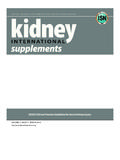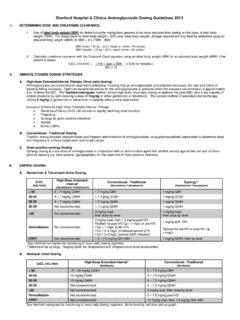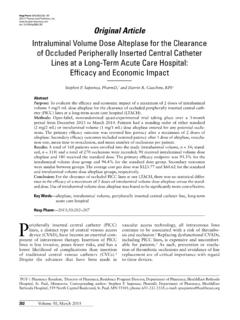Transcription of Hepatitis A, B, C, D, and E and Complications - - …
1 Hepatitis A, B, C, D, and E and Complications Reviewed September 2017, Expires September 2019 Provider Information and Specifics available on our Website Unauthorized Distribution Prohibited 2017 , , , LLC By Wanda Lockwood, RN, BA, MA Purpose The purpose of this course is to provide an overview of the course of infection and treatment options for Hepatitis A, B, C, D, and E and to outline the primary Complications . Goals Upon completion of this course, the healthcare provider should be able to: List at least 6 types of Hepatitis . Describe two different mechanisms of transmission. List at least 8 symptoms common to all main types of Hepatitis . Describe at least 5 different liver function tests. Discuss primary features of Hepatitis A, B, C, D, and E, including transmission and symptoms. Discuss treatment options for each type of Hepatitis .
2 Discuss how genotype affects treatment for Hepatitis C. Discuss available Hepatitis vaccinations. Discuss risk factors and prevention for each type of Hepatitis . Discuss nursing precautions to prevent transmission. Discuss dietary management. Discuss fulminant hepatic failure. Describe at least 5 symptoms of cirrhosis. Describe at least 3 symptoms that indicate that chronic Hepatitis may have progressed to hepatocellular cancer. Introduction Hepatitis , inflammation of the liver, can be caused by viruses, bacteria, and other microorganisms, toxic chemicals, alcohol, and other drugs, but viral Hepatitis is the most common cause of Hepatitis . Viral Hepatitis is a systemic infection in which virus infects the liver cells, causing biochemical and cellular changes and interfering with liver function. Hepatic liver There are a number of different Hepatitis viruses (not all identified), but the primary viruses are types A (HAV), B (HBV), C (HCV), D (HDV), and E (HEV).
3 HAV and HEV are spread by the fecal-oral route while types HBV, HCV, and HDV are bloodborne and have similar characteristics. Researchers estimate that only 10 to 40% of Hepatitis cases are correctly diagnosed as many people have subclinical disease or non-specific symptoms attributed to other disorders, such as the flu. In the United States, HAV, HBV, and HCV account for about 500,000 infections annually, and about 5 million people have chronic infections. Hepatitis is classified as foodborne (HAV and HEV) or bloodborne. Food-borne Hepatitis viruses do not cause chronic liver disease. HBV and HCV are of primary concern because they can lead to permanent damage of the liver and death. Immunizations are only available for HAV and HBV. Another Hepatitis virus, G (HGV) has been identified, but it rarely causes Hepatitis . HGV is bloodborne and produces a chronic viremia that lasts about 10 years.
4 Researchers believe that HGV may prolong survival in those coinfected with HIV and may reduce fibrosis in those with HCV-HIV coinfection. About of blood donors have a DNA virus designated TT (TTV) that is readily transmitted through blood transfusions, but as yet no association between this virus and liver disease has been detected. Another virus, known as SEN-V has been found in about 2% of blood donors and is also transmitted through transfusion. Researchers believe that SEN-V may account for some cases of non-ABCDE Hepatitis . While symptoms vary depending upon viral load, immune system, and type of Hepatitis , some symptoms are commonly seen with all types of symptomatic Hepatitis . About 50% develop mild to moderate hepatomegaly and 15% splenomegaly. Symptoms common to Hepatitis A, B, C, D, and E Jaundice and light or clay-colored stools, resulting from impaired excretion of bilirubin excretion.
5 Dark yellow-green urine, resulting from urobilinogen being excreted in the urine. Abdominal pain, caused by stretching of Glisson's capsule surrounding the liver, especially in the right upper quadrant. Anorexia, nausea, vomiting, diarrhea, and constipation, caused by alterations in digestion Fatigue and weakness, because of reduced energy metabolism by the liver Fever, flu-like symptoms, muscle or joint pains, caused by the general body response to inflammation. Pruritis, caused by accumulation of bile salts in the skin. Increased bruising and bleeding tendencies, because of decreased prothrombin synthesis and reduced Vitamin K absorption. Liver Function Tests: Normal values Bilirubin Indicates the ability of the liver to conjugate and excrete bilirubin: direct mg/dL, total mg/dL, and urine 0. Total protein Indicates whether the liver is producing protein in normal amounts: g/dL: Albumin: g/dL.
6 Globulin: g/dL. Serum protein electrophoresis is done to determine the ratio of proteins. Albumin/globulin (A/G) ratio: :1 to :1. (Albumin should be greater than globulin.) Prothrombin time (PT) 100% or clot detection in 10 to 13 seconds. PT increases with liver disease. International normalized ratio (INR) (PT result/normal average): <2 for those not receiving anticoagulation and to for those receiving anticoagulation. Critical value: >3 in patients receiving anticoagulation therapy. Alkaline phosphatase 17-142 adults. (Normal values vary with method.) Indicates biliary tract obstruction if no bone disease. AST (SGOT) 10-40 units. (Increases with liver cell damage from inflammation.) ALT (SGPT) 5-35 units. (Increases with liver cell damage from inflammation.) GGT, GGTP 5-55 /L females, 5-85 /L males. (Increases with alcohol abuse and may indicate liver or bile duct damage.)
7 LDH 100-200 units. (Increases with alcohol abuse and liver damage.) Serum ammonia 150-250 mg/dL (Increases in liver failure.) Cholesterol Total increases with bile duct obstruction and decreases with parenchymal disease. <200 Optimal 200-239 Borderline high 240 High The primary tests that indicate Hepatitis are alanine transaminase (ALT) and aspartate transaminase (AST). These liver enzymes elevate in the presence of inflammation and damage to liver cells. Alkaline phosphatase also increases with liver damage. ALT is more specific than AST (and usually higher) and is often used to monitor the progress of treatment. ALT levels may increase to 10 times the normal level during acute Hepatitis , staying elevated for 1 to 2 months and returning to normal within 6 months. ALT levels tend to be less elevated with chronic liver disease, usually to <4 times normal values.
8 Because many drugs can affect ALT levels, people should be questioned about all prescription and non-prescription drugs when tested. Because Hepatitis can interfere with liver function, levels of albumin and total protein may fall, indicating that liver cannot produce adequate amounts of albumin. Additionally, bilirubin levels may increase because the liver cannot adequately filter bilirubin, which results from the breakdown of red blood cells. In some cases, especially if tests are not conclusive, a liver biopsy may be indicated to determine the severity of Hepatitis and the degree of liver damage. Hepatitis A Hepatitis A, caused by an RNA virus of the Enterovirus family, is foodborne Hepatitis , spread by the fecal-oral route, most commonly from contaminated food, water, or shellfish, or through oral-anal sexual practices. Hepatitis A virus (HAV) may cause individual infections or epidemics.
9 Outbreaks have occurred in daycare centers, probably from diaper contamination of surfaces, such as changing tables, and facilities with people with developmental disabilities. A large outbreak occurred in Pennsylvania in 2003, traced to fecally-contaminated onions from Mexico. Incubation period 15 to 50 days (mean 28 to 30) Illness duration 4 to 8 weeks. Duration is longer in those >40. Carrier state No carrier state exists. Mortality Rarely fatal. Laboratory Abnormal liver function tests. Increased ALT. HAV antigen is present in stool for 7 to 10 days prior to onset of illness and for 14 to 21 days after symptoms subside. Vaccination Available. Recommended for: All children 1 to 2 years in 2 doses and those 24 months to 18 years at risk in 2 doses, with the second dosage 6 months after the first (Mandatory for infants in some states.) Adults 18.
10 Two doses with the second dose 6 to 12 months after the first. Also recommended for those with risk factors as well as those with clotting factor disorders or chronic liver disease and those working in laboratories where they may have contact with HAV. In 1992, the advisory committee on immunization practices (ACIP) recommended the vaccination only for those at risk, expanding this advisory in 1996 to include children in 11 states with high rates of HAV and then in 2006 to include all children. Immunization has had a significant impact on the number of people infected. Symptoms Symptoms are more severe in those >40, and morbidity increases in the presence of previous liver disease. Most patients are asymptomatic or have mild symptoms, which include: Low-grade fever. Anorexia, nausea. Fatigue, malaise. Myalgia. Dark urine. Clay-colored stools RUQ abdominal discomfort.















